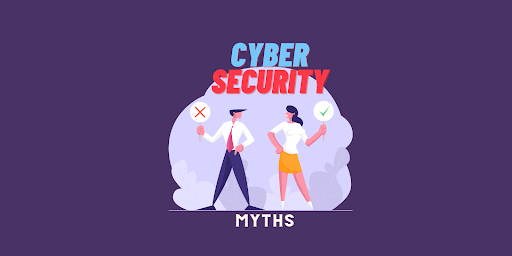Organizations are starting to pay attention to cybersecurity, not only because of compliance regulations but due to common sense. However, there are still several persistent cybersecurity myths that result in reactive cybersecurity strategies, rather than a proactive approach that significantly reduces the chances of infiltration and mitigates the consequences of a breach. Here are three common cybersecurity myths that put the organization at risk.
The top 3 cybersecurity myths
1: Cybersecurity is complicated: Cyber protection is based on staying in control of who is doing what, as well as knowing precisely where each piece of data is. To accomplish this, companies need full visibility into user activity and how critical and sensitive their data is.
Gaining visibility and control may seem complicated, but there are automated tools that can help. In particular, there are solutions that notify IT teams in real time about suspicious activity, and data classification tools that automatically locate and tag sensitive and regulated content. These technologies save valuable time by involving the IT team only when necessary, and they deliver more consistent and reliable results than manual methods.
For organizations that don’t have enough internal resources to keep the IT environment safe, there is also the option of having a dedicated partner provide cybersecurity as a service.
In either case, organizations should keep in mind that the adoption of hybrid work due to the pandemic has extended the attack surface and increased the risk of infiltration. Therefore, activity auditing is now even more crucial to ensure proper control over remote endpoints.
2: The threat comes from outside: Historically, organizations have been primarily concerned about external hackers. However, they should understand that adversaries often compromise legitimate user accounts in the corporate network, which turns them into insider threats. Accounts with privileged access rights, such as administrator accounts, are particularly targeted by cybercriminals.
To address this threat, organizations need to adopt the principle of least privilege. That means granting each user the least possible rights, so that they can access only the data and other IT resources necessary to carry out their tasks.
However, even strict enforcement of least privilege is not an effective barrier against cybercriminals if access is granted permanently. Instead, organizations need a “just-in-time” policy that grants access rights only when they are needed, and only for as long as needed, especially for tasks that require access to sensitive IT resources.
Least Privilege provides controls for a legitimate user, but what about malware and other threat actors that use privileged accounts as a means to execute lateral movement attacks? Adding a “Zero Standing Privilege” (ZSP) policy ensures that privileges are removed from accounts when they are not in active use. By removing the lateral movement attack surface, cybercriminals who try to compromise accounts are blocked from moving around the organization.
3: We’re too small to interest cybercriminals: Some organizations think they are safe from hackers. In particular, SMBs are often convinced that hackers are primarily looking for intellectual property (IP) like patents, and therefore their organization won’t be targeted.
Credit: Source link


Comments are closed.